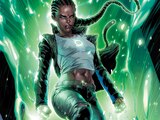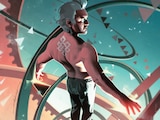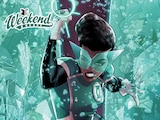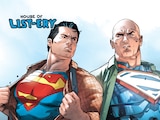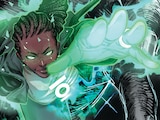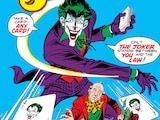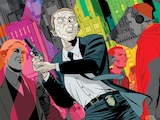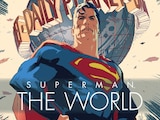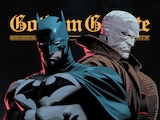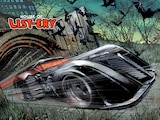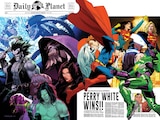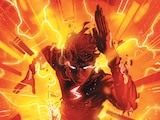When it comes to the DC Universe, it’s hard to think of a story more consequential than Crisis on Infinite Earths. The 1985 maxi-series remains one of the biggest stories DC has ever published, utilizing almost every hero and villain. Crisis also served as a turning point in DC continuity, giving characters like Superman and Wonder Woman a complete reset. It’s been almost forty years since Crisis was first published, and terms like “Pre-Crisis” and “Post-Crisis” are still a regular part of the comic book lexicon. If that isn’t legacy, then I don’t know what is.
This year, the groundbreaking story is coming to life as a three-part animated movie. Justice League: Crisis on Infinite Earths – Part One, available today on 4K UHD and Blu-ray, is a cinematic tour de force, vividly adapting Marv Wolfman and George Pérez’s classic story for an entirely new medium. The animated film is the latest chapter of the Tomorrowverse, a series of DC Universe animated films that began with 2020’s Superman: The Man of Tomorrow. And according to producer Jim Krieg, it was always buildings towards Crisis.
“It was from day one,” he elaborates. “It wasn't like we were doing a bunch of DC movies, and then said, 'Hey, what the hell, let's do Crisis.' It was let's do Crisis, and how many movies can we have to build up to it? We would have loved to have seventeen, but we got seven. Then it was just sort of a race to get all the characters, assets and themes moving in order to have them in place for Crisis.”

In fact, Crisis adds to the rewatchability of some of the earlier Tomorrowverse films. According to executive producer Butch Lukic, some of the puzzle pieces for Crisis were initially set up in those films.
“We have quite a few things, like the character that becomes Psycho Pirate is in Justice Society: World War II,” he explains. “And we also have another character that was in Green Lantern: Beware My Power, who was going to become a certain character here in Crisis. And we have a few other Easter eggs from those movies that everyone didn't even see coming.”
If you aren’t familiar with the original comic book, Crisis is a storyline about the destruction of the multiverse. The stakes don’t get much larger than that!
“Before we started doing this movie, fans knew the word multiverse, but Joe and Jane Average on the street didn't,” Krieg notes. “It just was sort of an unusual coincidence that by the time these movies came out, every single franchise took place in a multiverse.”

The new film also features a surprisingly emotional storyline involving the android Amazo. The powerful fighting machine finds himself torn between good and evil, as he learns the true meaning of humanity. Don’t spend too much time looking for the subplot in the original Crisis comic—it’s not there. But here, it serves as the emotional heartbeat for the first Crisis movie. It also gives longtime voice actor Nolan North (who voices Amazo, Hal Jordan and a mysterious vagrant) a chance to a deliver yet another knockout performance.
“We talked about how much processing is going to go into it,” North says, recalling how he found the perfect voice for Amazo. “You don't want to make it too robotic, because if they do process something that comes out to be robotic or something weird, it doesn't sound right. We found it on the day that we were doing it. Is he calmer? Is he very straightforward? He understands emotion, but may not feel it the same way a human would. He understands the obvious consequences. To be able to just find something that would speak to his physical traits, but also fit the right emotional arc of the story. It was definitely a balancing act.”
“Coming up with Amazo, we didn't want to do the exact same take that we've seen in other media,” Krieg adds. “He usually looks like a kind of giant elf, with the striped green outfit and pointy ears, but it looks a little better here. We have him be kind of a tragic character, who is like Frankenstein's monster. He's been usurped to do something evil, but his nature is to do something good. You wanted to give him some redemption at the end.”

“I did not expect people to have that kind of reaction,” North admits when asked about the ending. “I've heard a number of people now talk about being moved emotionally by an android, which is very flattering. It goes to strong writing, strong directing and just making sure I don't screw it up at that point. The animation plays a big part in evoking those emotions, plus the musical score, sound effects and, of course, the writing. I did not expect Amazo to move people to tears, but it's just product of a good story, and to be part of that is very fortuitous to me. I'm a lucky guy.”
You can’t talk about Crisis on Infinite Earths without talking about George Pérez. The original comic book remains some of the best work in the legendary artist’s career. Pérez died in 2022, but shortly before he passed, he visited the DC offices, where the Crisis animation team shared their plans with him.
“I met him and Marv Wolfman outside at a picnic table, thanks to [DC Creative Director of Animation] Mike Carlin,” Krieg recalls. “He really just embodied heroism in the face of almost certain tragedy. To see him make this brave choice of going out and meeting other creators and fans was really inspiring. Marv and he were so gracious about how we were in some ways, changing their work. They were enthusiastic about the changes, and not in any way bitter or negative about the situation. They felt that their work continued to exist, and people would read it for years to come.”

Justice League: Crisis on Infinite Earths – Part One also ends with a touching dedication to Pérez in the credits.
“I grew up on George Pérez,” shares director Jeff Wamester. “He was a huge influence on me as an artist and as a storyteller. His run on New Teen Titans, I was fascinated by, and when I picked up Crisis on Infinite Earths, I loved what he had done. I was sorry I never got to meet him, but this is one of the things we had to dedicate, because of what he had done.”
“He can't be matched as far as I'm concerned,” Lukic says. “If there's any hero book with multiple characters, he really is the guy to do it. Most other artists wouldn't even touch it.”
“To have been part of something that sits alongside his name is an honor,” states North. “I've been a fan of this stuff since I was a kid, and I'm not a kid anymore. To have my name alongside credits with someone like George Pérez, it kind of gives me goosebumps. We are all going to go someday, and to be able to have left something behind and to be part of something more than just myself is great.”
Justice League: Crisis on Infinite Earths – Part One is now available on 4K Ultra High Definition in limited edition steelbook packaging, standard Blu-ray and Digital. Justice League: Crisis on Infinite Earths – Part Two is coming soon.

